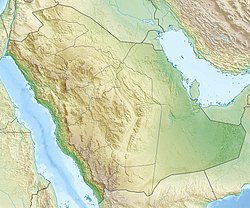| Location | In the southwestern central part of Saudi Arabia |
|---|---|
| Region | Najd |
| Coordinates | 19°44′39″N44°37′14″E / 19.744213°N 44.620447°E |
| Type | Ancient |
| Part of | Central Arabia |
| History | |
| Founded | c. 9000 BC |
| Abandoned | c. 7000 BC |
| Periods | Neolithic |
Al-Magar was an advanced Neolithic culture of Prehistoric Arabia, whose epicenter lay in modern-day southwestern Najd in Saudi Arabia. Al-Magar is possibly one of the first cultures in the world where widespread domestication of animals occurred, particularly the horse, during the Neolithic period. [1]



